This post contains affiliate links. Please read my disclosures.
Rice Flour is a delicate neutral tasting gluten-free flour and is a common ingredient in gluten-free baking. It is also excellent when used as a crisp coating to pan-fried dishes or in pancakes. Here's all the information you need to use rice flour as part of your gluten-free diet.
Jump to:
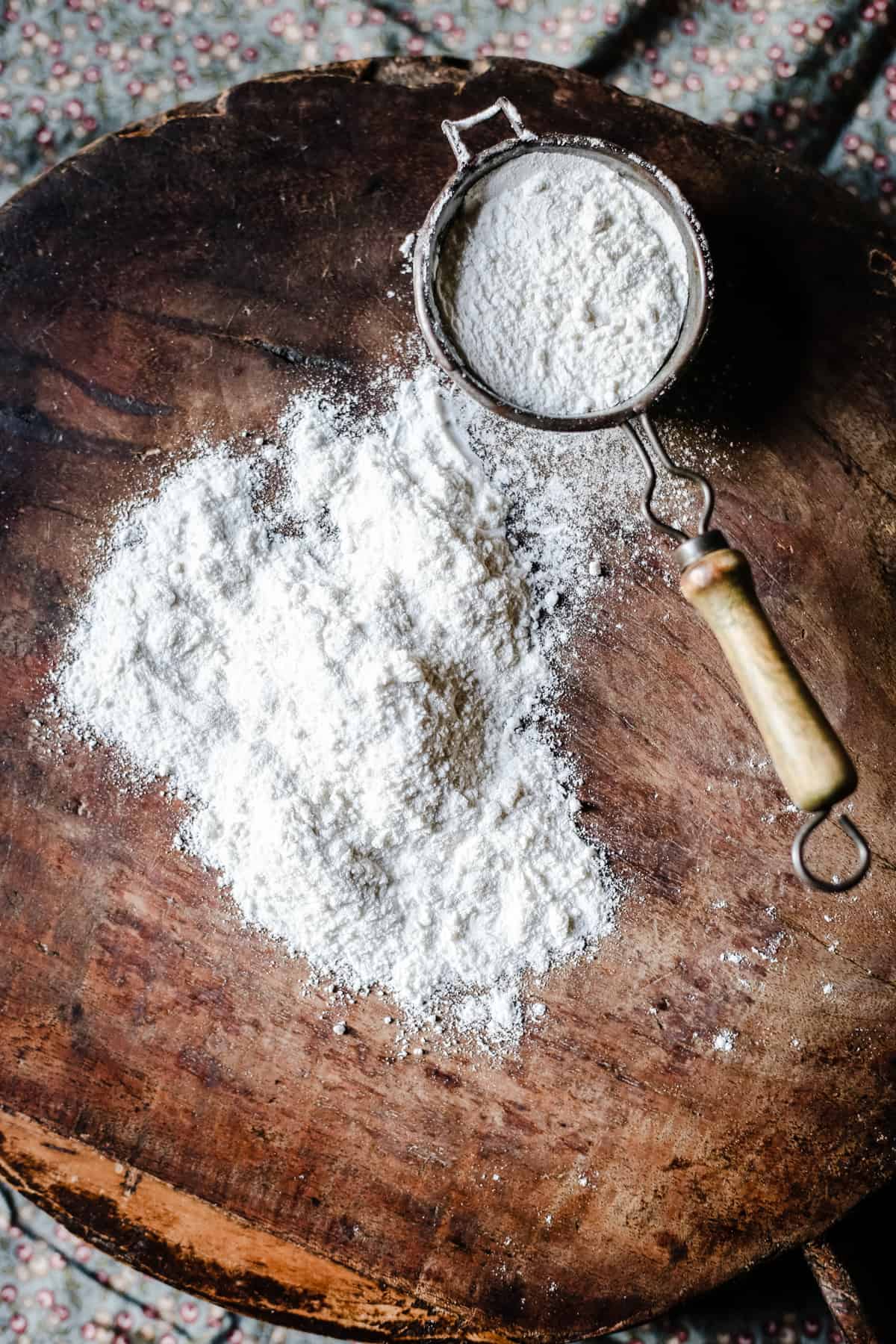
Is rice flour gluten-free?
Yes it is and often one of the main flours included in gluten-free all-purpose flour blends. Rice flour is a popular choice because it is a fine flour with a light colour, relatively neutral flavour, accessibility and reasonable price point (compared to other gluten-free flours). It is suitable for people with coeliac disease and a gluten intolerance.
What is rice flour?
Rice Flour is the easiest alternative flour to get hold of (in the UK at least) besides the catch-all gluten-free plain flour blends. You can find it at most large supermarkets in their gluten-free section.
It is also the flour that, if you are a keen cook, you might already have stashed away in your larder, irrespective of its gluten-free properties. Rice flour is used in traditional non-gluten free shortbread recipes alongside plain wheat flour to give a bit of crunch to the proceedings, which tells you a little bit about the texture profile of this flour.
Types of rice flour
There are 3 types of rice flour:
- White rice flour
- Brown rice flour
- Sweet rice flour (aka glutinous rice flour)
Brown rice flour vs. white rice flour
White rice flour and brown rice flour are both types of whole-grain flour ground from rice, but they differ because of how they are processed and their nutritional content.
- White rice flour is milled from grinding raw long or medium polished rice grains where the outer bran and germ layers have been removed, leaving only the starchy endosperm. This flour is white in colour and is light and fine.
- Brown rice flour has a higher nutritional value since the bran is not removed in the milling process. It is often not as finely ground as white rice flour meaning it is slightly denser with a nuttier taste. The bran and germ in brown rice contain valuable nutrients, including B vitamins, magnesium, and dietary fibre, which are lost during the processing of white rice flour. Due to its courser nature baked goods using brown rice flour have a more noticeable texture and taste. For certain recipes though I find this an endearing quality. Brown flour can be interchangeable with white rice flour in recipes if you want a bolder earthier flavour.
Sweet Rice Flour (aka glutinous rice flour)
This is a different beast entirely as it is a starchy flour milled from glutinous rice. It has a unique texture and flavour and is most common in Asian cuisine. Since it has a sticky and more cohesive texture than regular rice flour it is not a suitable substitute as they will achieve totally different results in your recipe.
The rest of this article won't cover sweet rice flour. Instead you can read more here >>> The Ultimate Guide to Sweet Rice Flour
Can I substitute rice flour for regular flour?
You cannot use rice flour as a 1:1 substitution for regular flour in your baked goods. If you swap rice flour 1:1 in your cooking or baking then the results can be gritty, perhaps a little greasy and often with a gummy mouthfeel.
Rice flour contains no gluten and absorbs liquid differently to wheat flour. Recipes using rice flour often need adjustments in the amount of liquid used or additional moisture to achieve the desired consistency.
The gritty results of rice flour is due to the milling of the rice grain and this can vary depending on which brand you buy. You want to buy rice flour which has been ground to a very fine consistency. This gritty texture can also be improved by resting the batter of your recipe before it is baked to allow the rice flour more time to soften the grains for a smooth texture.
Xanthan gum
It is generally thought that rice flour gives better final results in baked goods if xanthan gum is added to the recipe. However, this is unnecesary as you can achieve delicious gluten free cakes, cookies and bread if you use the right type of flour blended with the rice flour. Using gluten-free starchy flours or flours high in protein can improve the texture, binding, and moisture retention properties of the final baked goods. READ MORE >>> Why I don't bake with xanthan gum
Rice flour is a wonderful flour with many versatile uses, you just have to know how and when to use it.
Advantages of rice flour
- It is a very economical flour since it is made from one of the world’s greatest staple cereal grains. No-one said that gluten-free baking was cheap but since rice flour is easily available and plentiful then if you choose this flour for your main ingredient in your flour blend then you certainly won’t be breaking the bank. Which leads me to one of the best qualities about rice flour and the reason it is so often used.
- It has an incredibly subtle taste. So if you want a neutral flavour for your savoury recipes or if you want lemon, vanilla, spices or other delicate flavourings to shine in your baked goods then rice flour is an excellent choice.
Disadvantages of rice flour
- Overuse - Not only is rice flour one of the most widely available alternative flours but it is also the flour which most commercial brands use as their main ingredient in their gluten-free flour blends. In fact our tendency to rely on rice flour for gluten-free baking is one of the reasons why Alanna Taylor-Tobin in her excellent gluten-free baking book called Alternative Baker chooses not to include any recipes with rice flour as she feels that its tendency to dominate the gluten-free field can lead to a mono diet.
- Absorbs liquid differently to wheat flour - as discussed above rice flour needs more liquid or moisture added to recipes otherwise results can be dry with a weak structure.
- Can produce gritty results. Resting the batter for at least 20 minutes can reduce this problem.
For this reason rice flour should always be used judiciously as this flour is probably the reason why most people judge gluten-free baking as gritty but with a gummy mouthfeel. It works very well blended with other flours in baked goods to round out the texture and result in bakes that taste authentically good not just ‘good for gluten-free’.
How to make rice flour at home
If you really want full control over the grind of your rice flour then a great option is to make your own rice flour. For everyday home cooks it is possible to make an okay homemade rice flour with a coffee grinder or a high powered blender. However, if you require a very finely ground rice flour (and I recommend you do for less gritty results) then a better choice is to invest in a grain mill.
Processing rice through a grain mill is pretty straightforward and you should follow the instructions of your particular machine. For a top tip though you should run the rice through your grain mill twice for a truly fine rice flour.
The grain mill will also come in particularly useful if you want to grind your own oat flour.
Rice flour uses
Baking
The best qualities of white rice flour can be exploited if blended with other wholegrain flours, starchy flours or protein packed flours with better binding properties.
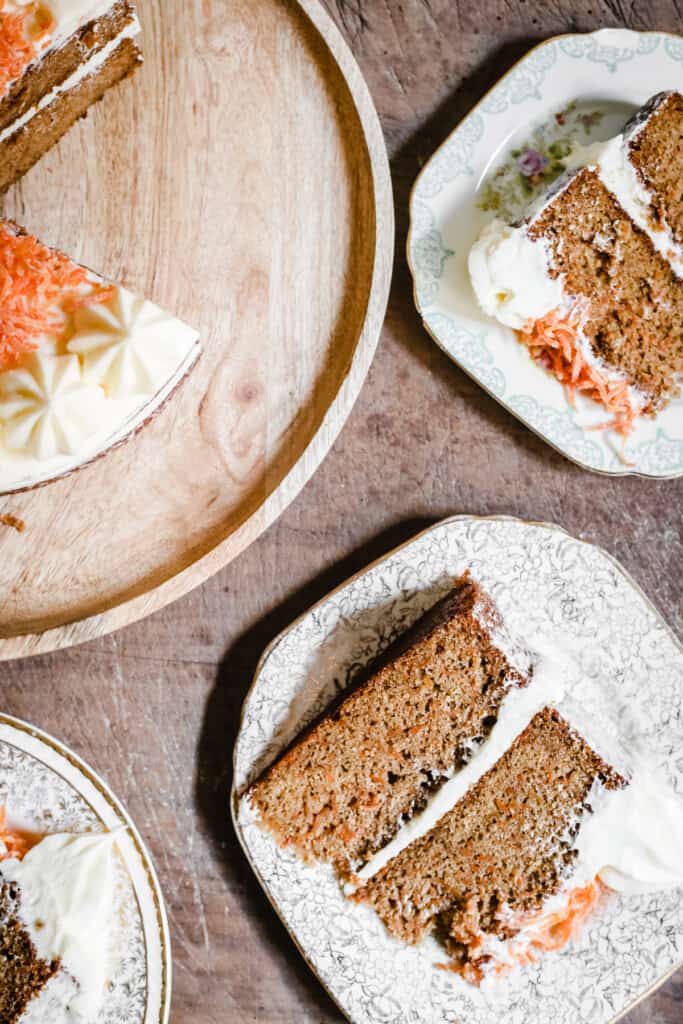
Try using rice flour blends like these in bakes like:
- Salted Caramel Chocolate Espresso Cake - rice flour, oat flour and tapioca starch
- Golden Beetroot Carrot Cake - rice flour and oat flour
- Courgette Oatmeal Cake - rice flour and oat flour
- Vegan Chocolate Coconut Banana Bread - rice flour, oat flour and tapioca flour
- Gluten-Free Carrot Cake - brown rice flour and sorghum flour
Read here to learn more about blending flours >>> The Ultimate Guide to Alternative & Gluten-Free Flours
Easy gluten-free flour blend
However, a very successful result is if you blend 1 cup of white rice flour with 1 cup almond flour. This is a very easy flour blend. It gives a lovely light texture and gives similar results to wheat flour. This is because the high protein content in the almond flour gives the flour blend more stability and will counteract any dry or gritty results.
READ MORE >>> Rice Flour Madeira Cake
✨Rice Flour Baking Tip✨
Allow your cake batter to rest for at least 10-20 minutes before placing in the oven. The rice flour will soften slightly which will help with any potential grittiness.
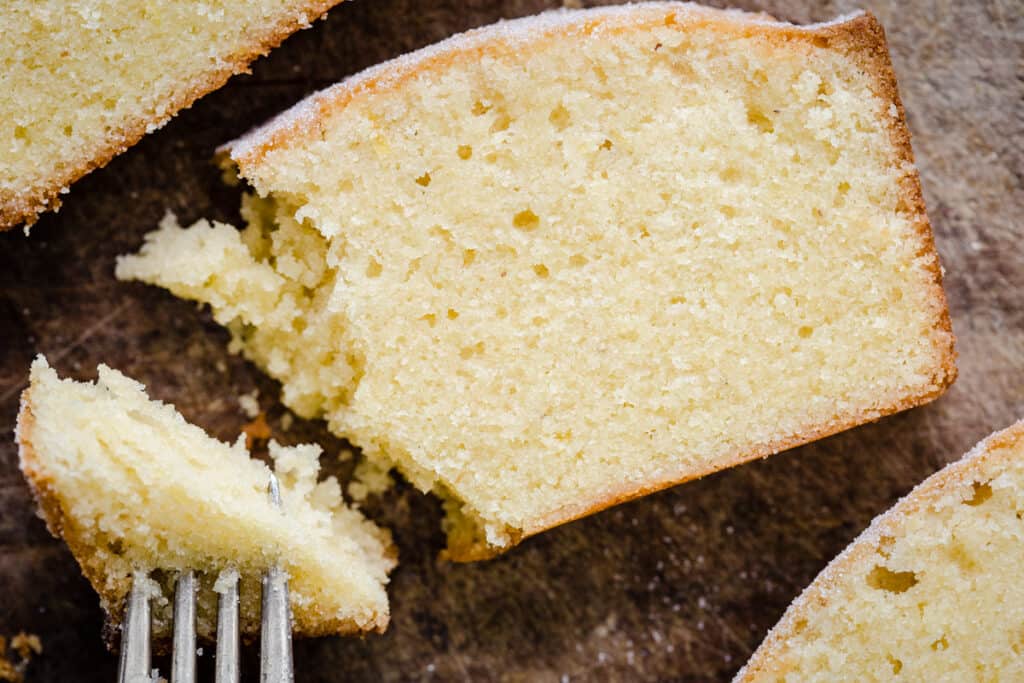
Frying
The granular texture of rice flour which can be a hindrance in your baking can be a real boon in your everyday cooking. Using rice flour as a coating for frying adds more crunch than regular wheat flour and is a lot lighter.
Pancakes
As rice flour is so delicate and light it creates the most beautifully lacy crisp pancakes.
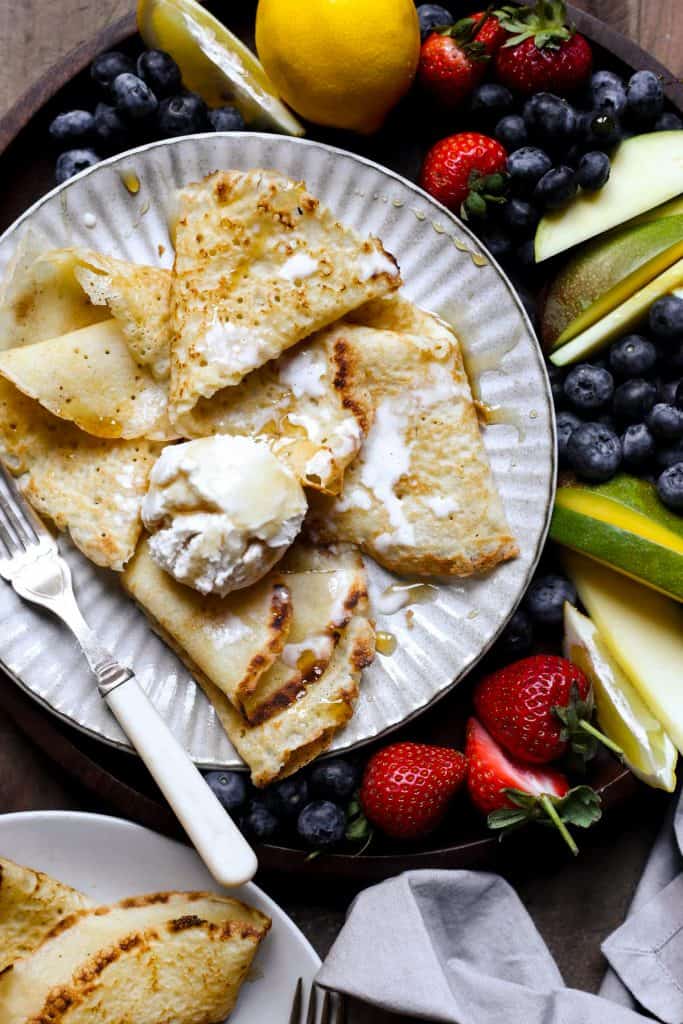
Try using it in these recipes:
- Gluten-Free English Pancakes
- Banh Xeo (Vietnamese Savoury Pancakes)
Batters
Rice flour gives an excellent crunch, so as you can imagine it is a great flour when you are making a batter. Since it is also neutral in flavour it doesn't overpower the main ingredients of a recipe. Try using it in the gluten-free versions of these classic recipes and the crust of your batter will be light and crisp:
Thickening agent
You can use rice flour as a thickening agent since it inhibits liquid separation but it in all honesty sweet rice flour (glutinous rice flour) is much more adept at this and the better choice. It gives a fuller, smoother and more well-rounded result. And actually you can use sweet rice flour on a 1:1 swap with wheat flour if you are using it in this way. Have a look at this Gluten-Free Gravy recipe for an example on how to use it.
Where to buy rice flour
There are various brands of rice flour and the texture can be quite different across the board. Make sure you are using a very finely ground rice flour which won’t impede your recipe and will allow for better incorporation with the other ingredients. Courser rice flours will mean the liquid in your recipe is not absorbed as well which can lead to flatter and greasy bakes. I recommend Doves Farm Gluten Free Rice Flour which is ground beautifully. For US based readers then Bob’s Red Mill is also brilliant but more difficult to get hold of for us UK based bakers.
How to store it
Rice flour keeps very well if stored in an airtight container in a cool dark place like a larder or pantry. Once opened, if tightly sealed, it can keep for up to a year. You can recognise rancid rice flours very quickly from the odour if you are concerned.

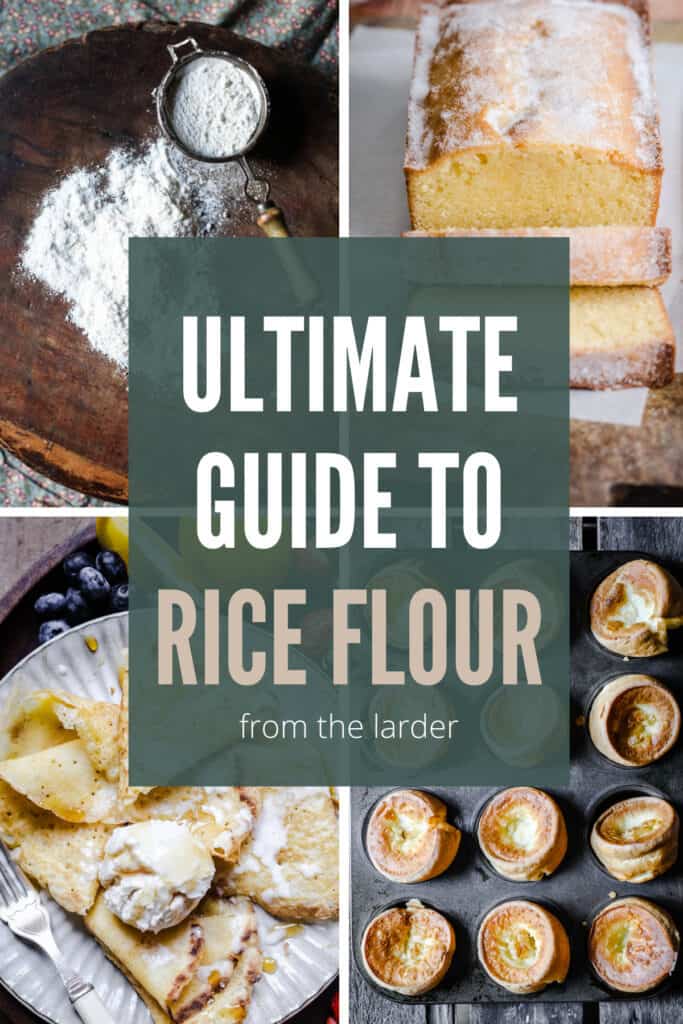
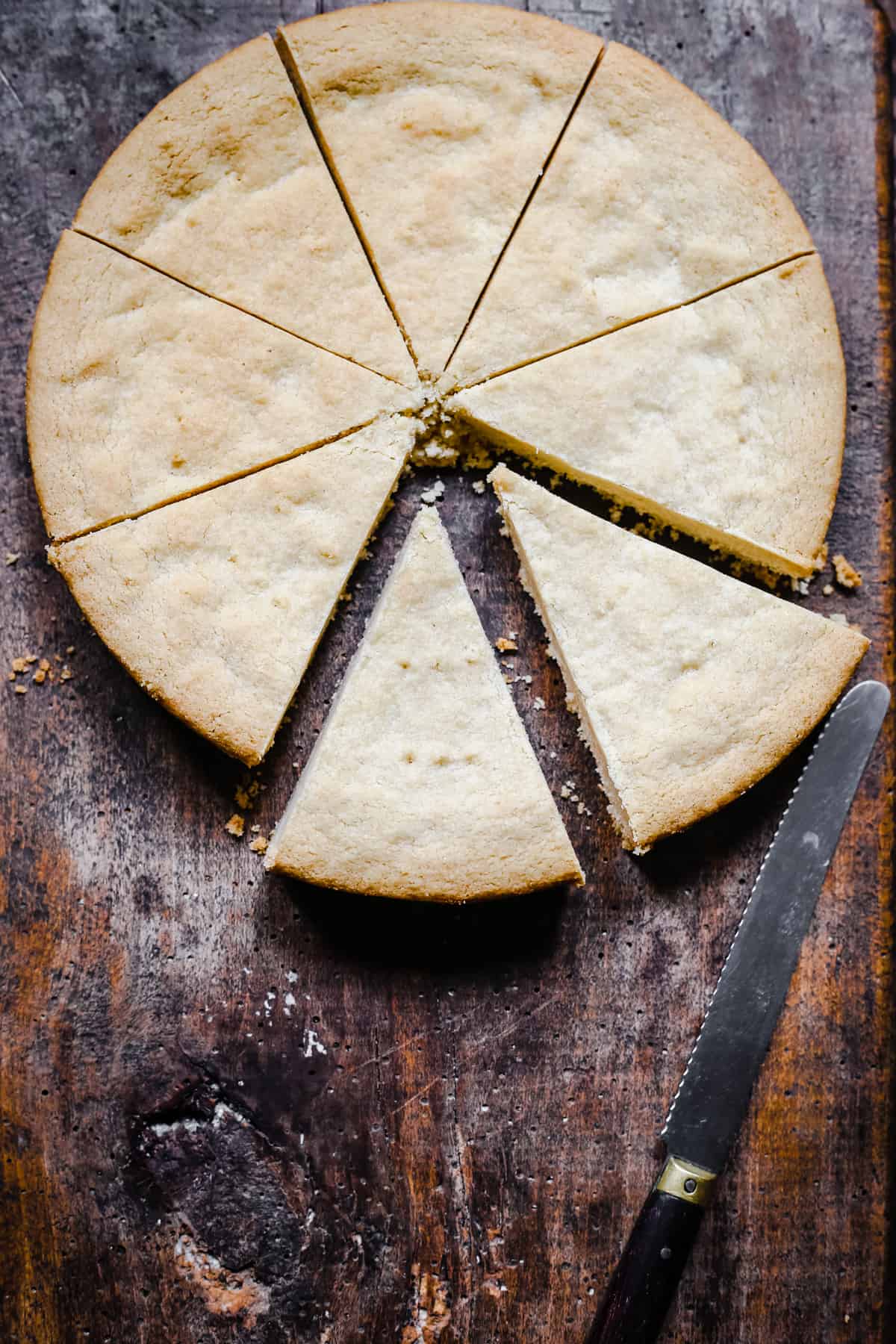
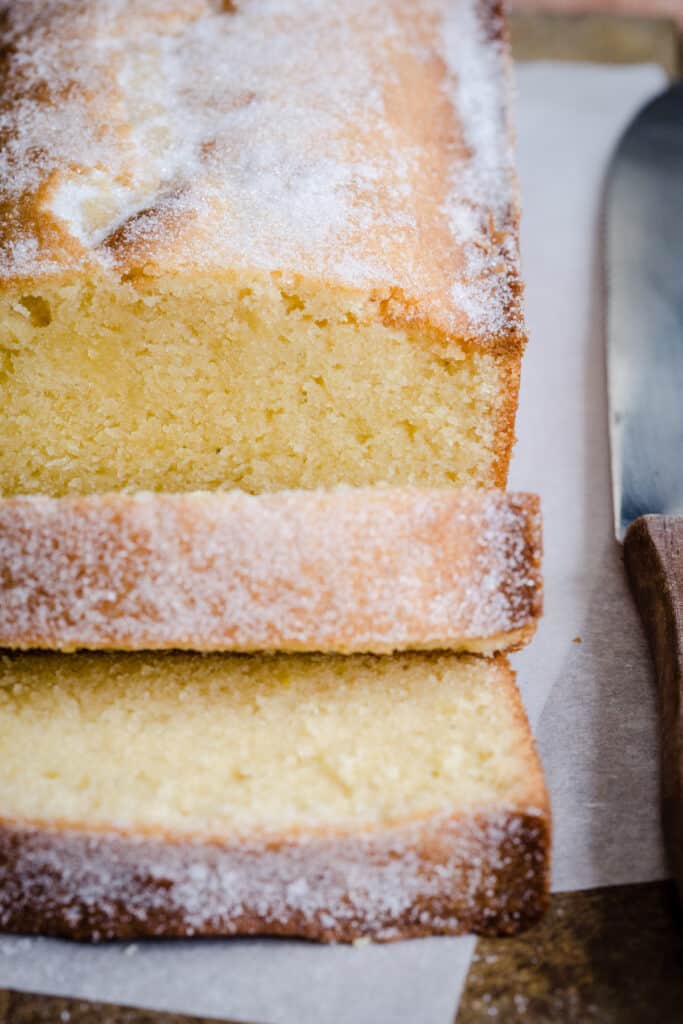
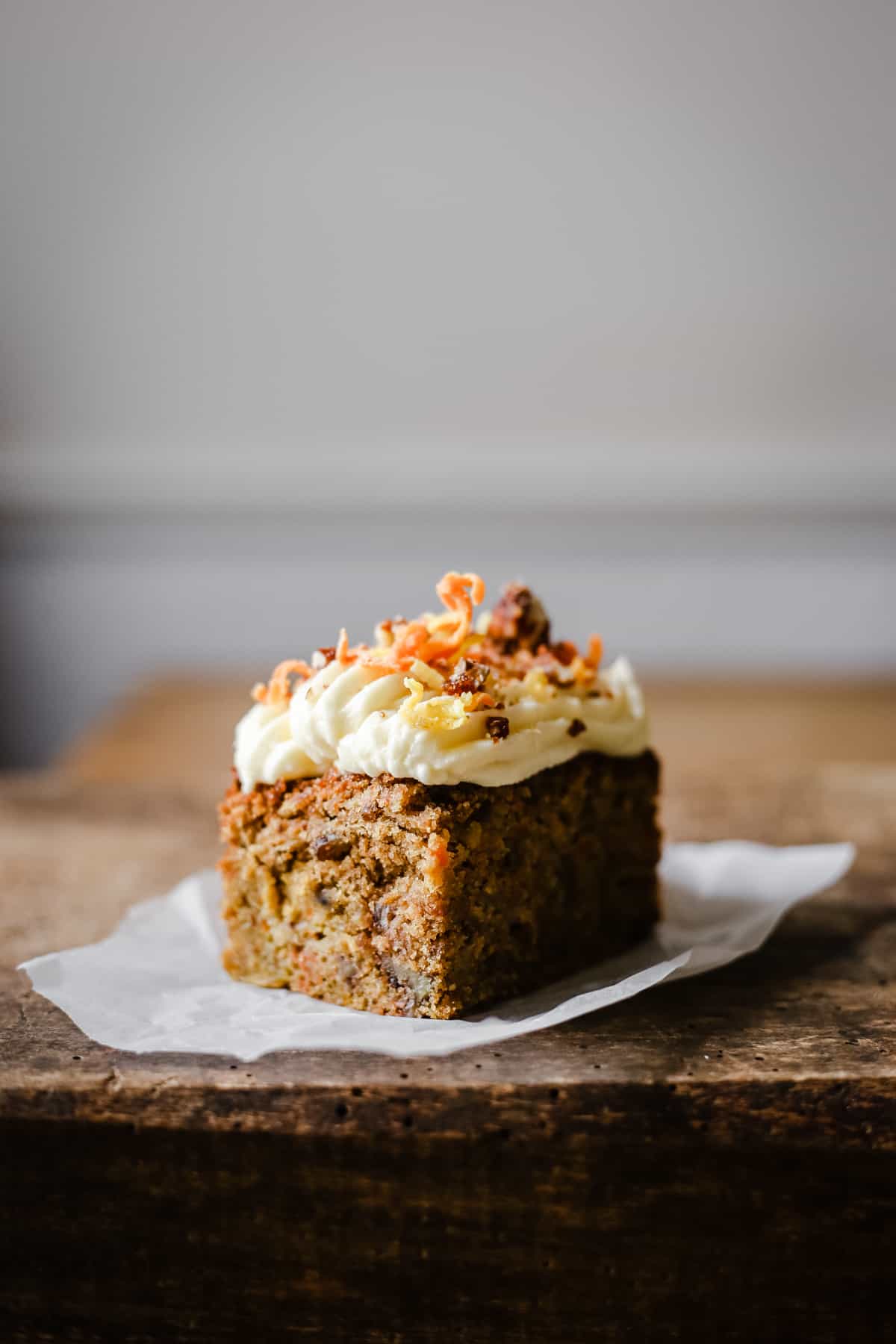
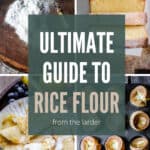
Ginny says
Ive just asked if I want to blend rice flour and almond flour what is ratio have now read 1 cup of each what would that be in grams or ounces.
Chris says
I'd have liked the answer to this too.
According to https://www.aqua-calc.com/calculate/food-volume-to-weight
White rice flour is 158g per cup and almond flour just 112g: that's a 60:40% ratio
So for every 100g of blended rice/almond flour, you'd need to use 60g rice flour to 40g almond flour
Georgina Hartley says
I use a ratio of 50%:50% and always use grams. Honestly I don't get too technical about it. So if the recipe calls for 200g flour then I split it so it is 100g rice flour and 100g almond flour.
Ginny says
If I wanted to blend rice flour and almond flour together what would the ratio be.
Paul says
How to store brown/white rice flour cookies, muffins, bread etc. afterwards, do they need to go in the fridge after baking or can leave on the counter for a few days In sealed container?
Thanks
Georgina Hartley says
You can store bakes like these in an airtight container at room temperature.
marites says
hi im from philippines and our native delicacy is using rice. how do i make rice flour rise in baking. how much baking powder should i add for every 100 grams rice flour? we call it here rice bibingka with eggs coconut milk butter and grated cheese. i baked them at 380 deg cel at 45 minutes. usually it doesnt rice. . what remedy or techniques should you please advise? thanks
Georgina Hartley says
I haven't baked that recipe before (or eaten it) so I'm not sure how much it has to rise but it does sound delicious! It's usually about 1 teaspoon baking powder for every 100g rice flour. Are you using enough eggs?
Alene says
I wrote that comment in 2021, in August, right before I learned that I had arsenic poisoning, from rice. I haven't been eating anything with rice since right after that. I just was tested again and my arsenic level was way down, from 47% to 7%. Thank goodness! So no more rice for me, in any form. I miss baking with rice flour so much! However, here and there, I have had some success with blends without rice. It is a struggle. Love your recipes without rice flour! They have saved me.
Alene says
I find both rice flours, brown and white, very gritty. I don't find it when I use finely ground rice flour. Can brown and white flour finely ground be easily substituted in recipes for the regular grind? Will it affect the baking product? Thank you!
Georgina Hartley says
They can taste gritty if they overwhelm a flour blend. Brands of rice flour will differ on how finely ground they are so if you find a rice flour you get on well with in recipes then that is great - you can use any brand. (just checking you are not referring to sweet rice flour/glutinous rice flour which is a totally different texture and cannot be substituted for rice flour in a recipe without changing the recipe outcome).
Megan says
Hi I was wondering what the ratio of rice flour to AP flour is?
Georgina Hartley says
I'm afraid I can't give a ratio as you cannot do a straight swap from AP flour to rice flour. Rice flour doesn't have the gluten or any properties that mimic gluten so any recipe (whether they are cakes, cookies, sauces or batters) will not hold together, they will be very dry as rice flour doesn't absorb liquid very well and will crumble apart. You will need to blend your rice flour with flours with a high protein content like a nut flour or even with starchy flours like sweet rice flour, tapioca flour in order to achieve similar results to AP flour. This post gives much more information on the subject >>> Ultimate Guide to Gluten-Free & Alternative Flours
Rita says
I am gluten free dairy free with a long list of allergies. Short end is I am not able to eat processed foods. What recipes can white flour be used in? I am not able to have almond flour, coconut flour, oat or wheat flour.
Georgina Hartley says
Hi Rita, I use rice flour in so many recipes from cakes to pancakes to savoury dishes. This Rice Flour Madeira Cake is lovely - you can sub in sunflower seed flour for the almond flour. There are also lots of other examples within this post of recipes which can use this flour.
Suzy Caddy says
Thank you for this in depth explanation of the wheat free flours. Just new to this type of cooking as I have MCS and other chronic illnesses. Recently some diabetes medication poisoned me. I had to go off all dairy and wheat to try and fix it. I have used oatflour now in scottish oat scones but they came out a bit dry and not so nice. In Australia not all flours are available. I use coconut flour and oat flour together. Havent tried rice flour yet. I want to make cakes, cupcakes and biscuits as its nearing christmas, but not sure how. Also not sure what ratios of flours to mix and how much baking powder and baking soda to use.
Georgina Hartley says
Hi Suzy, it can be difficult when you can't get hold of the flours you want but you should be able to work with whatever you have. There are lots of options for coconut flour and oat flour. I would suggest you experiment even with flourless bakes - have a look at this post for some ideas on cookies and cakes. If you're stuck on ratios of flours then have you read my Ultimate Guide to Alternative and Gluten-Free flours which gives you the ratio of flours to use in a blend. I hope that helps get you started.
Maria says
Congrats.. your blogg is amazing.. i really enjoy reading ir!!! Thanks for your Job..